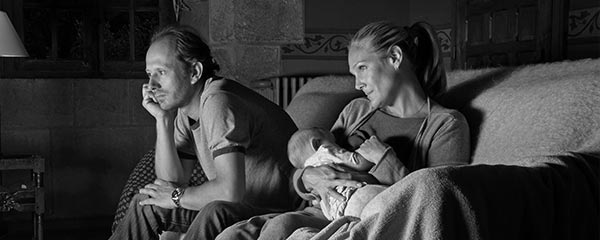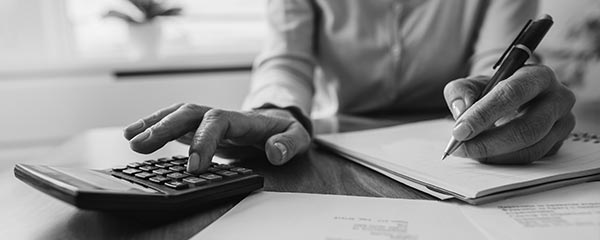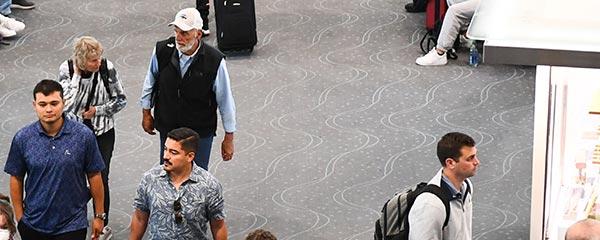Story Highlights
- 21% say they are ready to return to normal activities "right now"
- Republicans (44%) are most likely to say they are ready "right now"
- 12% say they would wait for vaccine development
WASHINGTON, D.C. -- There is no consensus among Americans on when they would feel ready to return to normal life after the coronavirus outbreak. Asked how soon they would return to their normal, day-to-day activities without any government restrictions, U.S. adults fall into four camps.
About one in five (21%) are ready to return to normal right now; 36% say they would return to their activities once the number of new cases of coronavirus in their state declines significantly; 31% say they would return to normal life once there are no new cases in their state; and 12% say they will return to their day-to-day activities once a vaccine has been developed.
Two-thirds of Americans fall into the two camps that gauge their return to normalcy based on their state's progress in decreasing new cases to some degree -- but each of these camps has shrunk since Gallup's early April measure. Meanwhile, each of the two absolutist camps has expanded over the course of the month. The percentage of Americans who say they are ready to get back to normal routines right now is now up eight percentage points since early April. The percentage of those who won't return until a vaccine is developed is up five points.
| Apr 2-6, 2020 | Apr 20-26, 2020 | Change | |||||||||||||||||||||||||||||||||||||||||||||||||||||||||||||||||||||||||||||||||||||||||||||||||
|---|---|---|---|---|---|---|---|---|---|---|---|---|---|---|---|---|---|---|---|---|---|---|---|---|---|---|---|---|---|---|---|---|---|---|---|---|---|---|---|---|---|---|---|---|---|---|---|---|---|---|---|---|---|---|---|---|---|---|---|---|---|---|---|---|---|---|---|---|---|---|---|---|---|---|---|---|---|---|---|---|---|---|---|---|---|---|---|---|---|---|---|---|---|---|---|---|---|---|---|
| % | % | (pct. pts.) | |||||||||||||||||||||||||||||||||||||||||||||||||||||||||||||||||||||||||||||||||||||||||||||||||
| Right now | 13 | 21 | +8 | ||||||||||||||||||||||||||||||||||||||||||||||||||||||||||||||||||||||||||||||||||||||||||||||||
| After number of new cases in your state declines significantly | 40 | 36 | -4 | ||||||||||||||||||||||||||||||||||||||||||||||||||||||||||||||||||||||||||||||||||||||||||||||||
| After no new cases in your state | 40 | 31 | -9 | ||||||||||||||||||||||||||||||||||||||||||||||||||||||||||||||||||||||||||||||||||||||||||||||||
| After vaccine developed | 7 | 12 | +5 | ||||||||||||||||||||||||||||||||||||||||||||||||||||||||||||||||||||||||||||||||||||||||||||||||
| Gallup Panel | |||||||||||||||||||||||||||||||||||||||||||||||||||||||||||||||||||||||||||||||||||||||||||||||||||
The latest findings were collected in a probability-based sample of 7,921 U.S. adults from the Gallup Panel, interviewed by web April 20-26, 2020. Gallup asked a similar question that refers to declines in new cases in the U.S., rather than respondents' states, and found similar results.
Many Americans are likely basing their assessments of when they would be willing to resume normal social interactions on the wide range of conditions required by U.S. states as well as international governments before reopening their economies. Some states that meet the federal government's criteria for low or declining numbers of cases have begun to ease restrictions in conformance with federal protocols.
Growing Numbers of Republicans Want a Return to Normalcy "Right Now"
The eight-point increase since early April in the percentage of Americans in the "right now" camp is driven largely by increases in this view among Republicans.
Republicans (44%) are the only subgroup among whom the plurality express readiness to return to normal activities right now. The percentage holding this position has climbed 19 points in recent weeks, the largest increase of any population subgroup. Republicans are now twice as likely as political independents (22%) to say they are ready to return right now. Few Democrats (4%) say they are ready to return to their normal activities right now.
| Apr 2-6, 2020 | Apr 20-26, 2020 | Change | |||||||||||||||||||||||||||||||||||||||||||||||||||||||||||||||||||||||||||||||||||||||||||||||||
|---|---|---|---|---|---|---|---|---|---|---|---|---|---|---|---|---|---|---|---|---|---|---|---|---|---|---|---|---|---|---|---|---|---|---|---|---|---|---|---|---|---|---|---|---|---|---|---|---|---|---|---|---|---|---|---|---|---|---|---|---|---|---|---|---|---|---|---|---|---|---|---|---|---|---|---|---|---|---|---|---|---|---|---|---|---|---|---|---|---|---|---|---|---|---|---|---|---|---|---|
| % Right now | % Right now | (pct. pts.) | |||||||||||||||||||||||||||||||||||||||||||||||||||||||||||||||||||||||||||||||||||||||||||||||||
| National adults | 13 | 21 | +8 | ||||||||||||||||||||||||||||||||||||||||||||||||||||||||||||||||||||||||||||||||||||||||||||||||
| Democrats | 5 | 4 | -1 | ||||||||||||||||||||||||||||||||||||||||||||||||||||||||||||||||||||||||||||||||||||||||||||||||
| Independents | 12 | 22 | +10 | ||||||||||||||||||||||||||||||||||||||||||||||||||||||||||||||||||||||||||||||||||||||||||||||||
| Republicans | 25 | 44 | +19 | ||||||||||||||||||||||||||||||||||||||||||||||||||||||||||||||||||||||||||||||||||||||||||||||||
| 18-44 | 13 | 17 | +4 | ||||||||||||||||||||||||||||||||||||||||||||||||||||||||||||||||||||||||||||||||||||||||||||||||
| 45-64 | 15 | 29 | +14 | ||||||||||||||||||||||||||||||||||||||||||||||||||||||||||||||||||||||||||||||||||||||||||||||||
| 65+ | 9 | 18 | +9 | ||||||||||||||||||||||||||||||||||||||||||||||||||||||||||||||||||||||||||||||||||||||||||||||||
| Urban | 5 | 15 | +10 | ||||||||||||||||||||||||||||||||||||||||||||||||||||||||||||||||||||||||||||||||||||||||||||||||
| Suburban | 14 | 18 | +4 | ||||||||||||||||||||||||||||||||||||||||||||||||||||||||||||||||||||||||||||||||||||||||||||||||
| Rural | 16 | 28 | +12 | ||||||||||||||||||||||||||||||||||||||||||||||||||||||||||||||||||||||||||||||||||||||||||||||||
| Gallup Panel | |||||||||||||||||||||||||||||||||||||||||||||||||||||||||||||||||||||||||||||||||||||||||||||||||||
The second-largest increase in the "right now" camp has taken place among U.S. adults aged 45 to 64 (now at 29%). This age group is much more likely than both young adults (17%) and senior citizens (18%) to say they are ready to return to their day-to-day activities, whereas earlier in the month, they were on par with younger adults.
Urbanicity is another key factor: Americans living in rural areas (28%) are about twice as likely as those living in urban areas (15%) to report readiness for normalcy right now. Meanwhile, 18% of suburbanites say they are ready right now.
About One in Five Nonwhites, Democrats Want to Wait for Vaccine Development
Nonwhites (19%) are about twice as likely as whites (10%) to say they would be ready for a return to normalcy only after this milestone in vaccine development. The percentage of nonwhites with this view about doubled between early and late April, and grew much more than that of whites.
The percentage of suburbanites who say they would wait until after a vaccine is developed also grew substantially. The current 16% among residents of suburban areas is up 10 points from early April -- a much higher rate of growth than the three-point increases among residents of rural as well as urban areas.
The percentages of Democrats and independents taking the most cautious position each grew by seven points in recent weeks. Democrats (18%) are the most likely to say they would need to see a vaccine developed before returning to normal life, while 12% of independents say the same. Few Republicans (4%) say they need to wait for a vaccine, essentially unchanged from early April.
| Right now | After new cases in your state decline significantly | After no new cases in your state | After vaccine developed | ||||||||||||||||||||||||||||||||||||||||||||||||||||||||||||||||||||||||||||||||||||||||||||||||
|---|---|---|---|---|---|---|---|---|---|---|---|---|---|---|---|---|---|---|---|---|---|---|---|---|---|---|---|---|---|---|---|---|---|---|---|---|---|---|---|---|---|---|---|---|---|---|---|---|---|---|---|---|---|---|---|---|---|---|---|---|---|---|---|---|---|---|---|---|---|---|---|---|---|---|---|---|---|---|---|---|---|---|---|---|---|---|---|---|---|---|---|---|---|---|---|---|---|---|---|
| % | % | % | % | ||||||||||||||||||||||||||||||||||||||||||||||||||||||||||||||||||||||||||||||||||||||||||||||||
| National adults | 21 | 36 | 31 | 12 | |||||||||||||||||||||||||||||||||||||||||||||||||||||||||||||||||||||||||||||||||||||||||||||||
| 18-44 | 17 | 40 | 31 | 12 | |||||||||||||||||||||||||||||||||||||||||||||||||||||||||||||||||||||||||||||||||||||||||||||||
| 45-64 | 29 | 32 | 28 | 12 | |||||||||||||||||||||||||||||||||||||||||||||||||||||||||||||||||||||||||||||||||||||||||||||||
| 65+ | 18 | 34 | 36 | 12 | |||||||||||||||||||||||||||||||||||||||||||||||||||||||||||||||||||||||||||||||||||||||||||||||
| Whites | 25 | 35 | 30 | 10 | |||||||||||||||||||||||||||||||||||||||||||||||||||||||||||||||||||||||||||||||||||||||||||||||
| Nonwhites | 11 | 37 | 34 | 19 | |||||||||||||||||||||||||||||||||||||||||||||||||||||||||||||||||||||||||||||||||||||||||||||||
| Democrats | 4 | 35 | 42 | 18 | |||||||||||||||||||||||||||||||||||||||||||||||||||||||||||||||||||||||||||||||||||||||||||||||
| Independents | 22 | 35 | 32 | 12 | |||||||||||||||||||||||||||||||||||||||||||||||||||||||||||||||||||||||||||||||||||||||||||||||
| Republicans | 44 | 37 | 14 | 4 | |||||||||||||||||||||||||||||||||||||||||||||||||||||||||||||||||||||||||||||||||||||||||||||||
| Urban | 15 | 35 | 39 | 11 | |||||||||||||||||||||||||||||||||||||||||||||||||||||||||||||||||||||||||||||||||||||||||||||||
| Suburban | 18 | 38 | 28 | 16 | |||||||||||||||||||||||||||||||||||||||||||||||||||||||||||||||||||||||||||||||||||||||||||||||
| Rural | 28 | 34 | 28 | 10 | |||||||||||||||||||||||||||||||||||||||||||||||||||||||||||||||||||||||||||||||||||||||||||||||
| Gallup Panel, April 20-26, 2020 | |||||||||||||||||||||||||||||||||||||||||||||||||||||||||||||||||||||||||||||||||||||||||||||||||||
Bottom Line
Americans' current feelings about when and how they are willing to return to their usual activities are speculative at the moment, as state and federal governments are still assessing the trajectories of the coronavirus outbreak. Meanwhile, the timeline for vaccine development is uncertain. Some analysts say that the oft-repeated 12- to 18-month timeline is overly optimistic; others think there is reason to hope for an even quicker timeline.
But Americans' varied ideas about the timing of a return to normalcy illustrate the competing narratives emerging of caution versus immediacy, and the murkiness of which approach leaders and Americans themselves should emphasize.
Most see their state's reports of new cases as the true barometer, but there isn't an agreed-upon measure of how much progress a state would need to show before things can go back to normal. Meanwhile, growing factions of Americans are not basing their readiness on their state's progress in reducing new infections, but are opting either for a "right now" approach or a wait for a vaccine that still may be a long way off.
Learn more about how the Gallup Panel works.




